Abstract
Seventy-six male volunteers were studied in a crossover trial to assess the impact on the central system of electric currents such as might be induced by exposure to an intense power frequency electric field. Currents totalling 500 microamperes (50 Hz) were passed through electrodes attached to the head, upper arms, and feet, simulating exposure of and average man to a vertical electric field of about 36 kV/m. Exposure was continuous for a single day (5.5 hours) and the experiment was based on a double blind, counterbalanced, within subject design. A series of psychological tests examining self reports of both stress and arousal (mood checklist) and performance tests of memory, attention, and verbal skills were administered. Although the double blind conditions were compromised to some extent by reported sensations at electrode sites, the duration of these sensations was small in relation to the overall exposure or sham exposure time and did not interact with the effects apparently associated with exposure that were found. No significant difference between the exposed and sham-exposed groups was found on the first day, but on the second day the sham exposed group felt more aroused at the end of the day and their response times had improved more on the complex problems of a syntactic reasoning test. No exposure effects were apparent in self reports of stress or in performance in a semantic reasoning test, although both showed some influence of sensations. Interpretation of the exposure effects is complicated by their apparent restriction of the second test day, which may indicate some type of state dependent transfer phenomenon.
Full text
PDF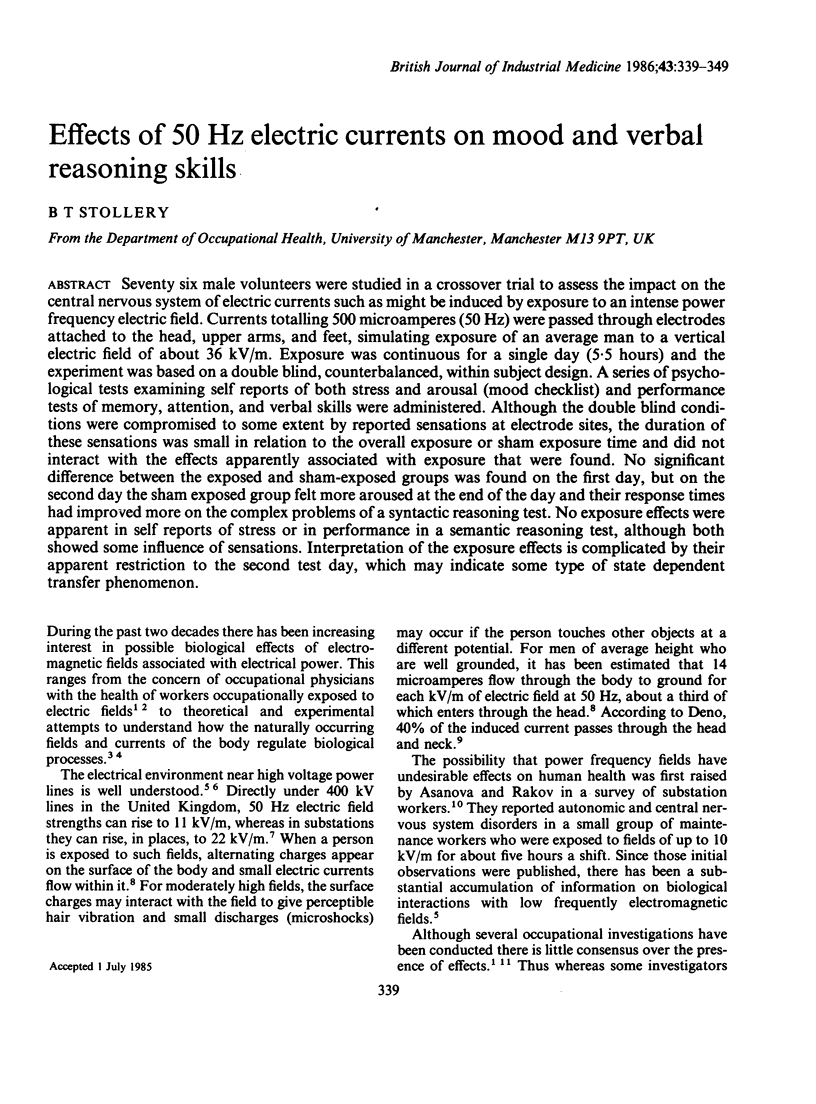
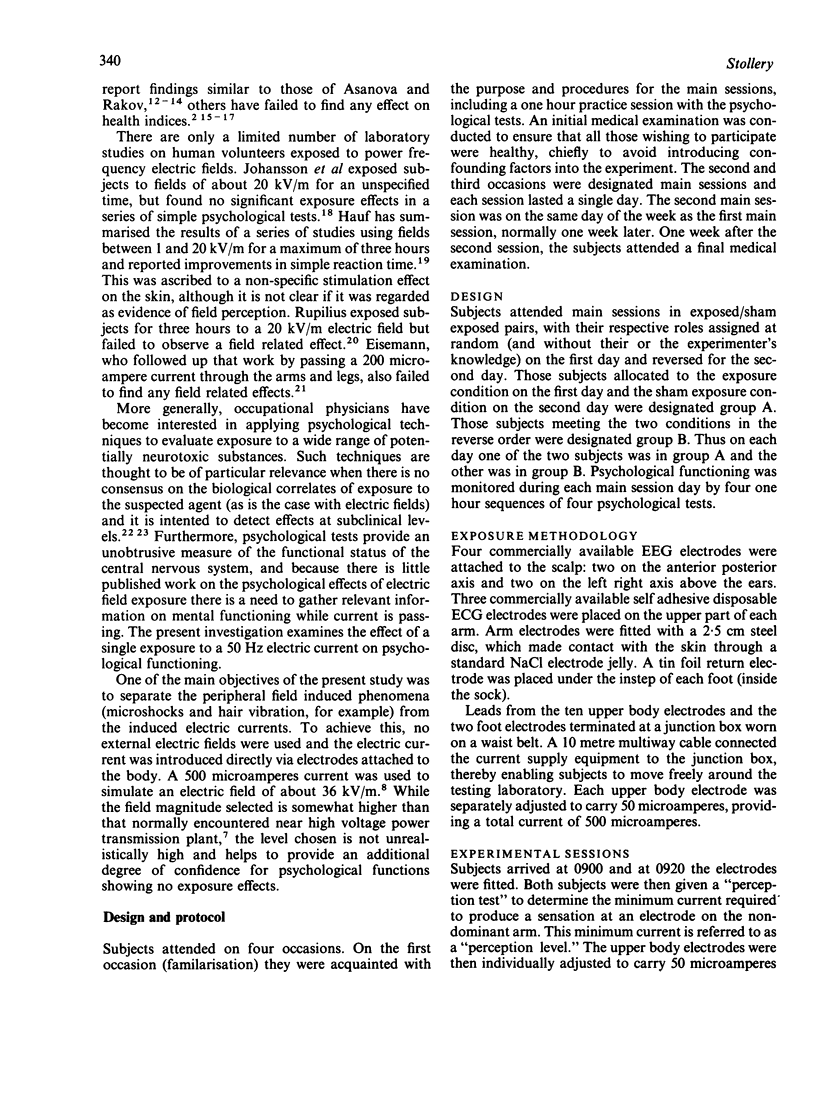
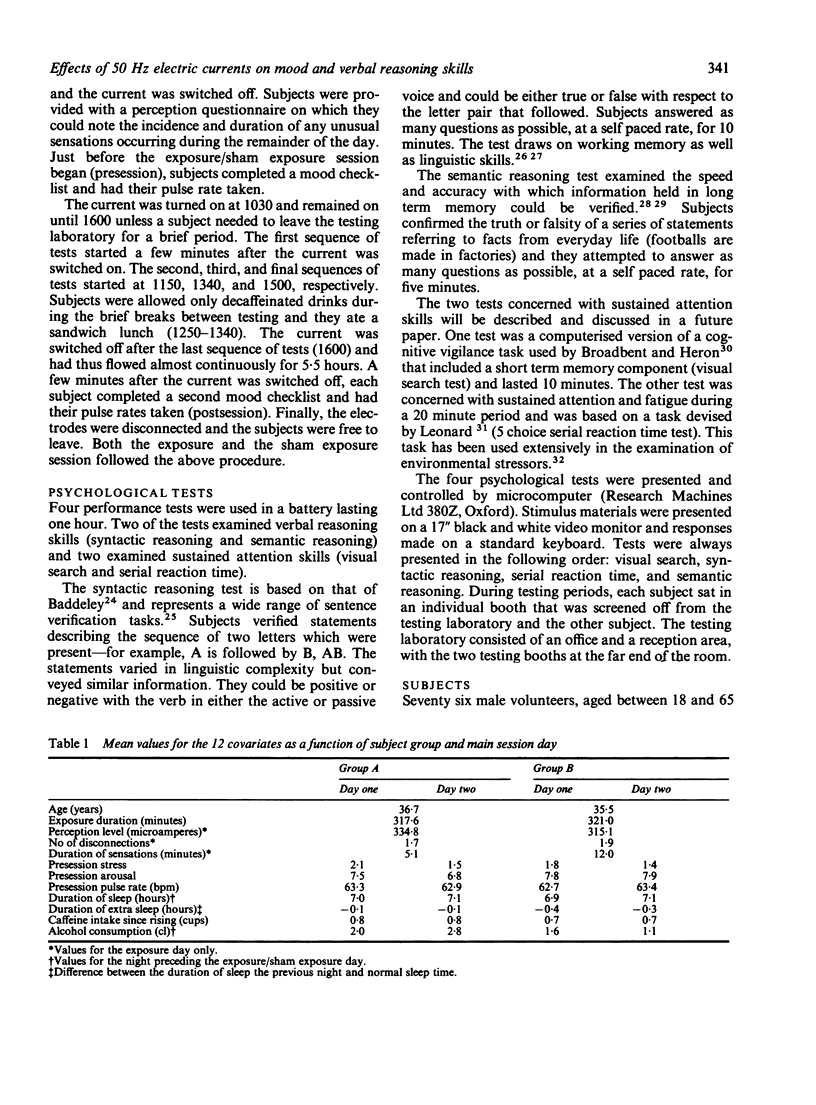
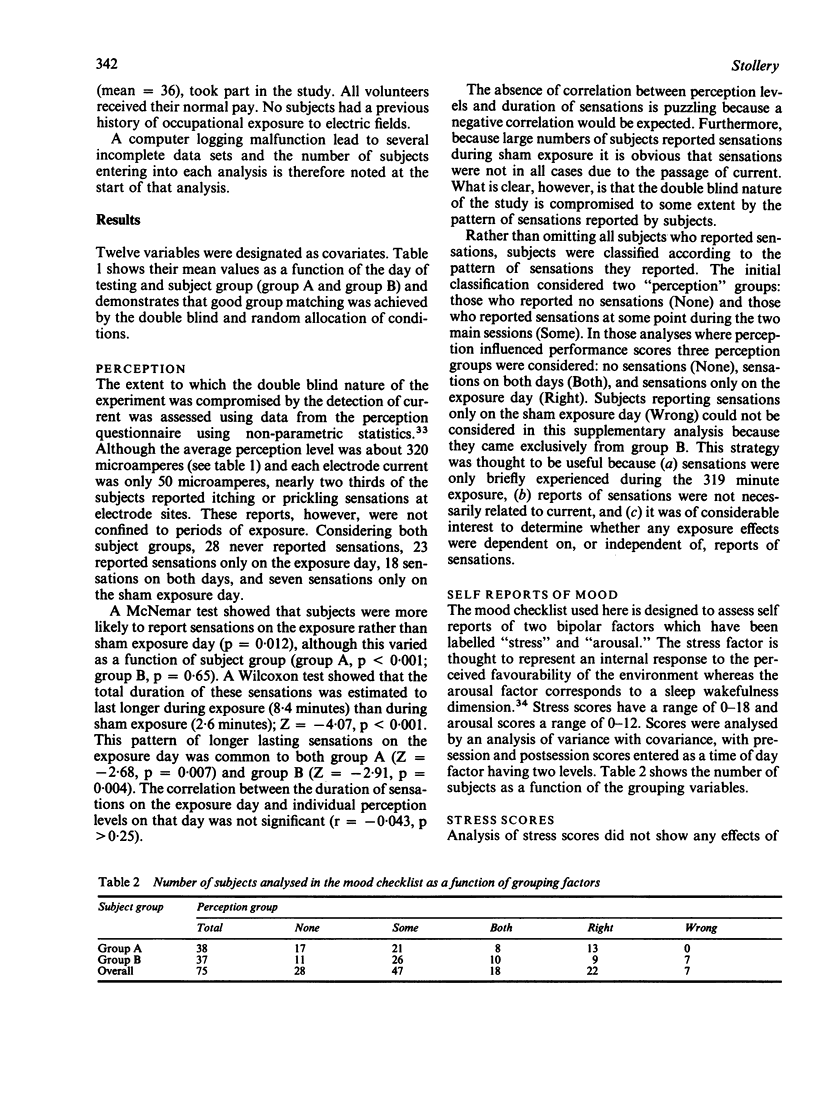

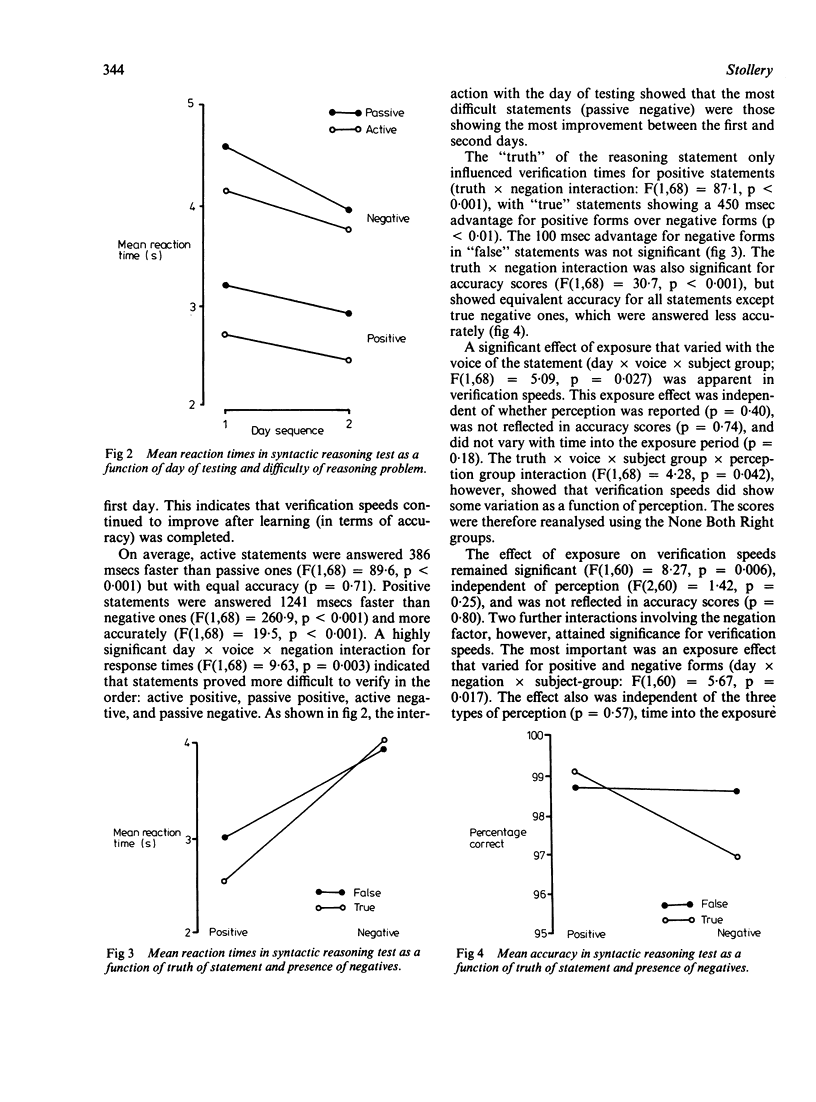
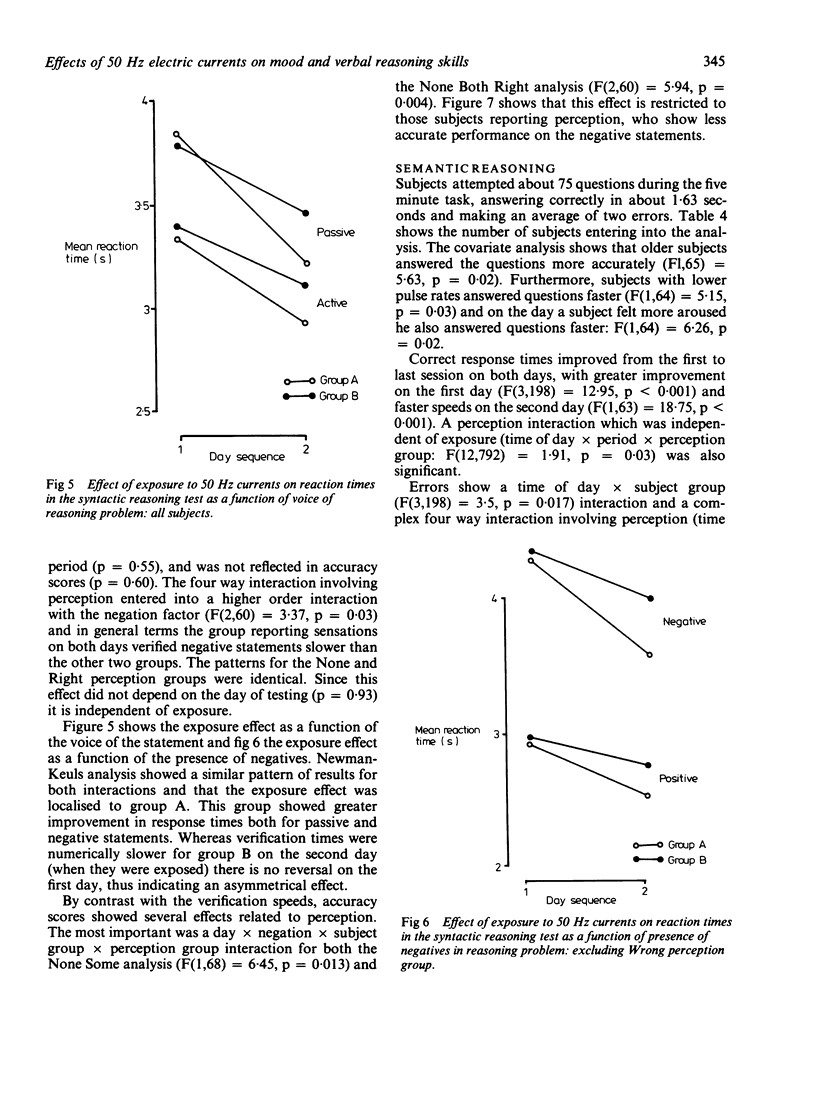
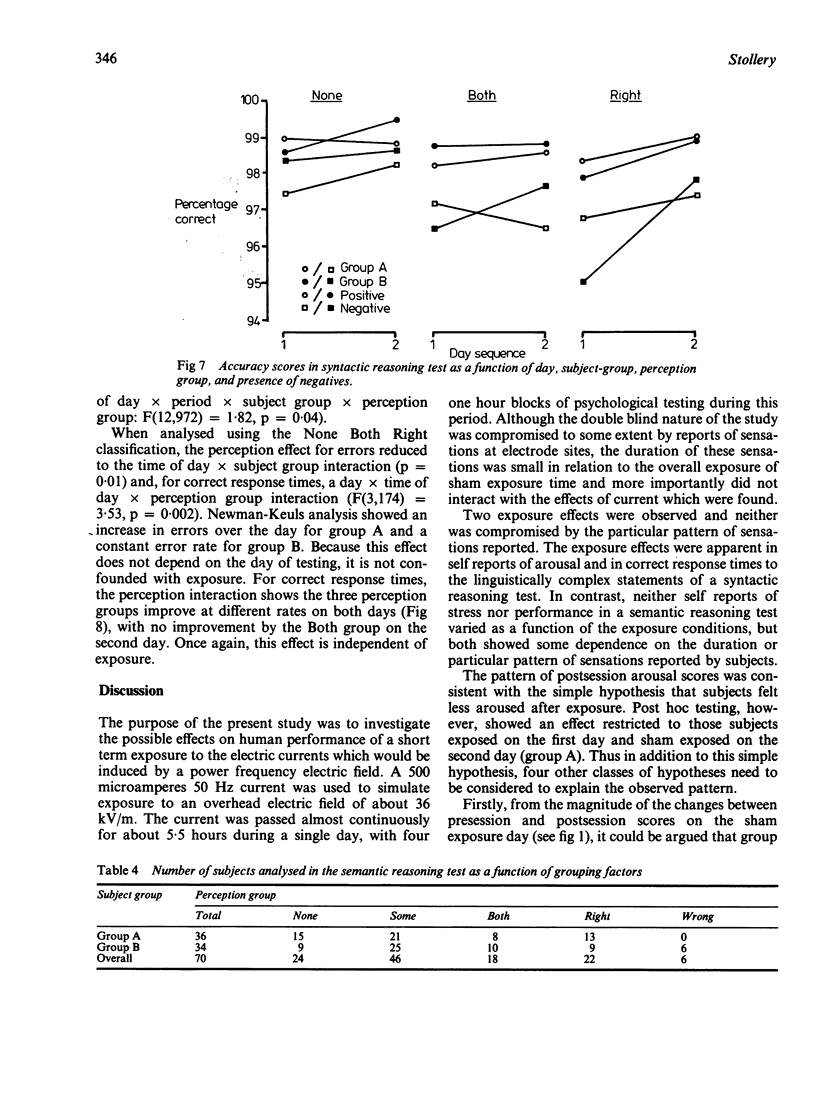
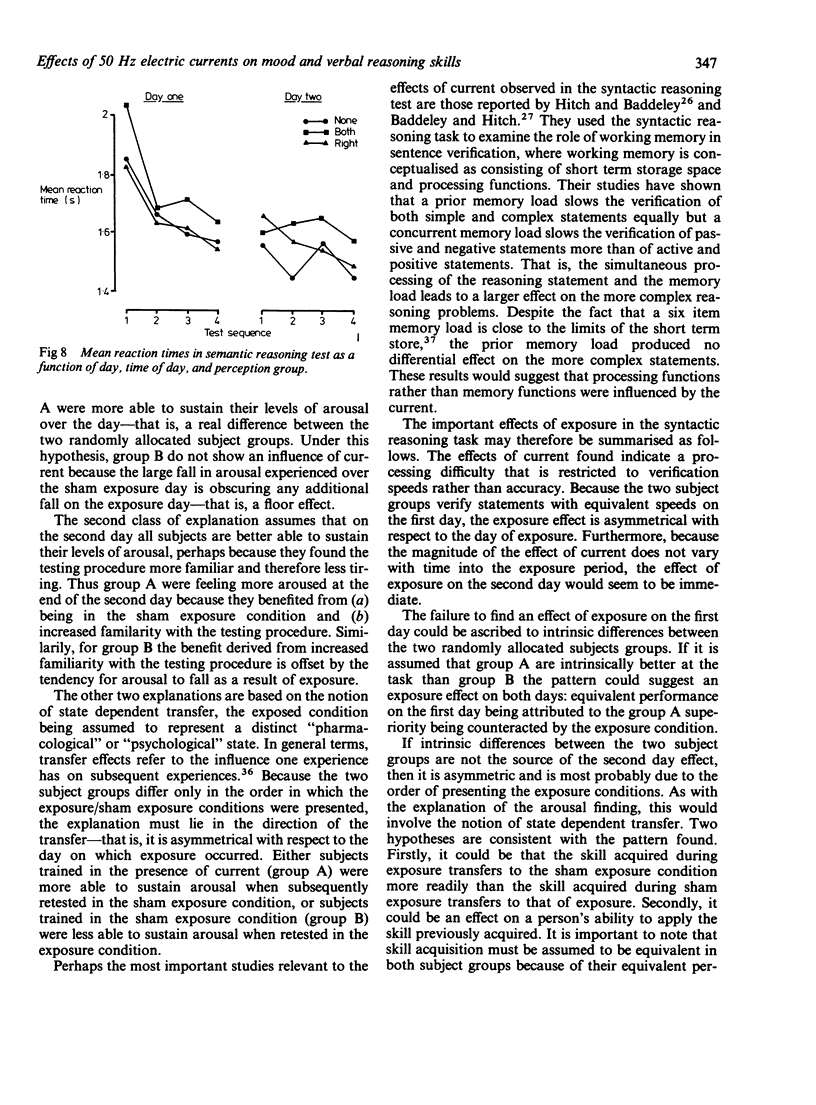
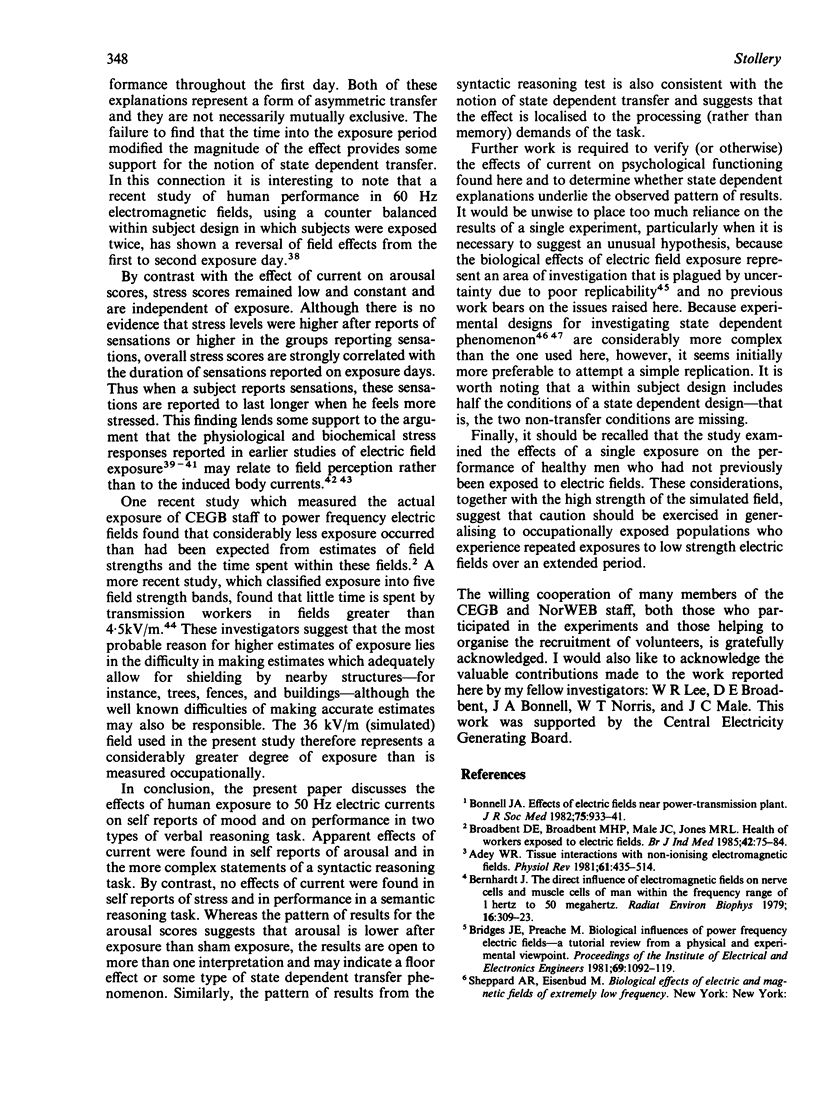
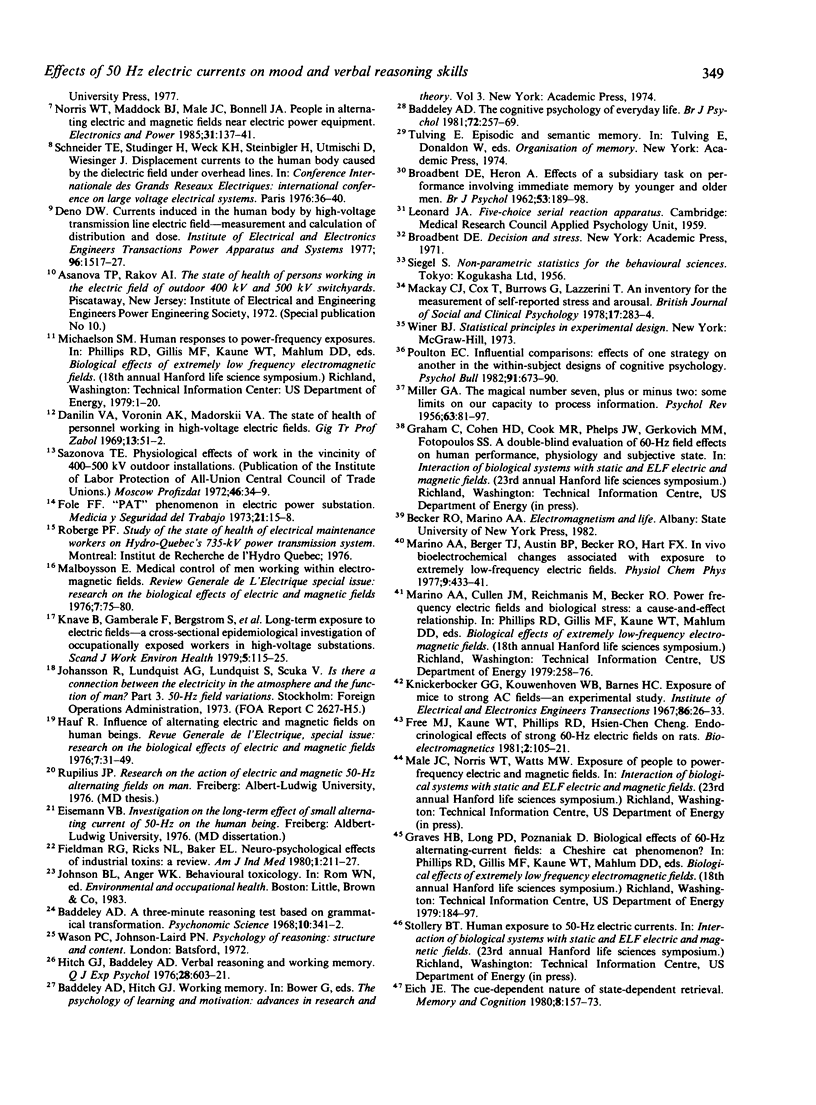
Selected References
These references are in PubMed. This may not be the complete list of references from this article.
- Adey W. R. Tissue interactions with nonionizing electromagnetic fields. Physiol Rev. 1981 Apr;61(2):435–514. doi: 10.1152/physrev.1981.61.2.435. [DOI] [PubMed] [Google Scholar]
- BROADBENT D. E., HERON A. Effects of a subsidiary task on performance involving immediate memory by younger and older men. Br J Psychol. 1962 May;53:189–198. doi: 10.1111/j.2044-8295.1962.tb00825.x. [DOI] [PubMed] [Google Scholar]
- Bernhardt J. The direct influence of electromagnetic fields on nerve- and muscle cells of man within the frequency range of 1 Hz to 30 MHz. Radiat Environ Biophys. 1979;16(4):309–323. doi: 10.1007/BF01340569. [DOI] [PubMed] [Google Scholar]
- Bonnell J. A. Effects of electric fields near power-transmission plant. J R Soc Med. 1982 Dec;75(12):933–941. doi: 10.1177/014107688207501203. [DOI] [PMC free article] [PubMed] [Google Scholar]
- Broadbent D. E., Broadbent M. H., Male J. C., Jones M. R. Health of workers exposed to electric fields. Br J Ind Med. 1985 Feb;42(2):75–84. doi: 10.1136/oem.42.2.75. [DOI] [PMC free article] [PubMed] [Google Scholar]
- Eich J. E. The cue-dependent nature of state-dependent retrieval. Mem Cognit. 1980 Mar;8(2):157–173. doi: 10.3758/bf03213419. [DOI] [PubMed] [Google Scholar]
- Feldman R. G., Ricks N. L., Baker E. L. Neuropsychological effects of industrial toxins: a review. Am J Ind Med. 1980;1(2):211–227. doi: 10.1002/ajim.4700010212. [DOI] [PubMed] [Google Scholar]
- Free M. J., Kaune W. T., Phillips R. D., Cheng H. C. Endocrinological effects of strong 60-Hz electric fields on rats. Bioelectromagnetics. 1981;2(2):105–121. doi: 10.1002/bem.2250020203. [DOI] [PubMed] [Google Scholar]
- Knave B., Gamberale F., Bergström S., Birke E., Iregren A., Kolmodin-Hedman B., Wennberg A. Long-term exposure to electric fields. A cross-sectional epidemiologic investigation of occupationally exposed workers in high-voltage substations. Scand J Work Environ Health. 1979 Jun;5(2):115–125. doi: 10.5271/sjweh.2661. [DOI] [PubMed] [Google Scholar]
- MILLER G. A. The magical number seven plus or minus two: some limits on our capacity for processing information. Psychol Rev. 1956 Mar;63(2):81–97. [PubMed] [Google Scholar]
- Mackay C., Cox T., Burrows G., Lazzerini T. An inventory for the measurement of self-reported stress and arousal. Br J Soc Clin Psychol. 1978 Sep;17(3):283–284. doi: 10.1111/j.2044-8260.1978.tb00280.x. [DOI] [PubMed] [Google Scholar]
- Marino A. A., Berger T. J., Austin B. P., Becker R. O., Hart F. X. In vivo bioelectrochemical changes associated with exposure to extremely low frequency electric fields. Physiol Chem Phys. 1977;9(4-5):433–441. [PubMed] [Google Scholar]


